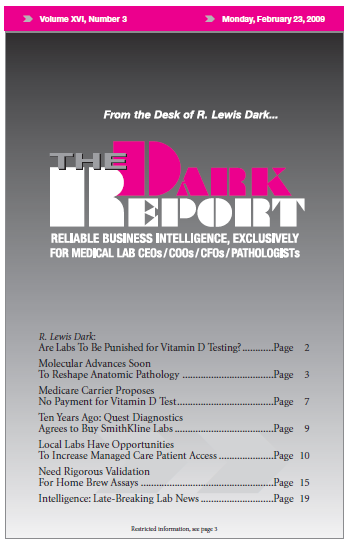CEO SUMMARY: National headlines about erroneous Vitamin D results are a reminder to the lab industry of the imprecision and risks associated with home brew testing. According to one laboratory expert, every laboratory-developed test (LDT) must meet two high standards. One, accuracy, reproducibility, and transferability of the test result number. Two, a reference range that …
Need Rigorous Validation For Home Brew Assays Read More »
To access this post, you must purchase The Dark Report.


